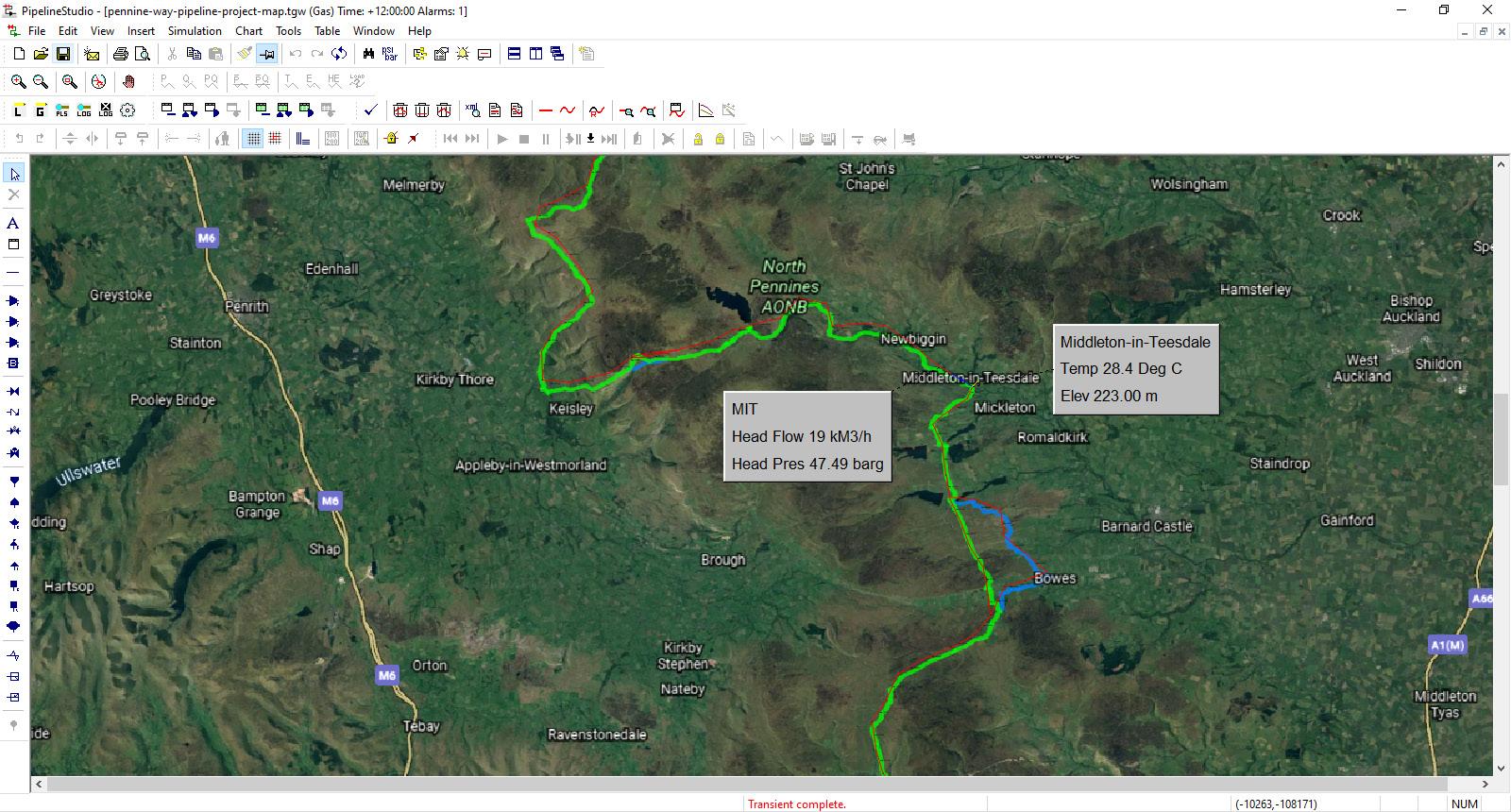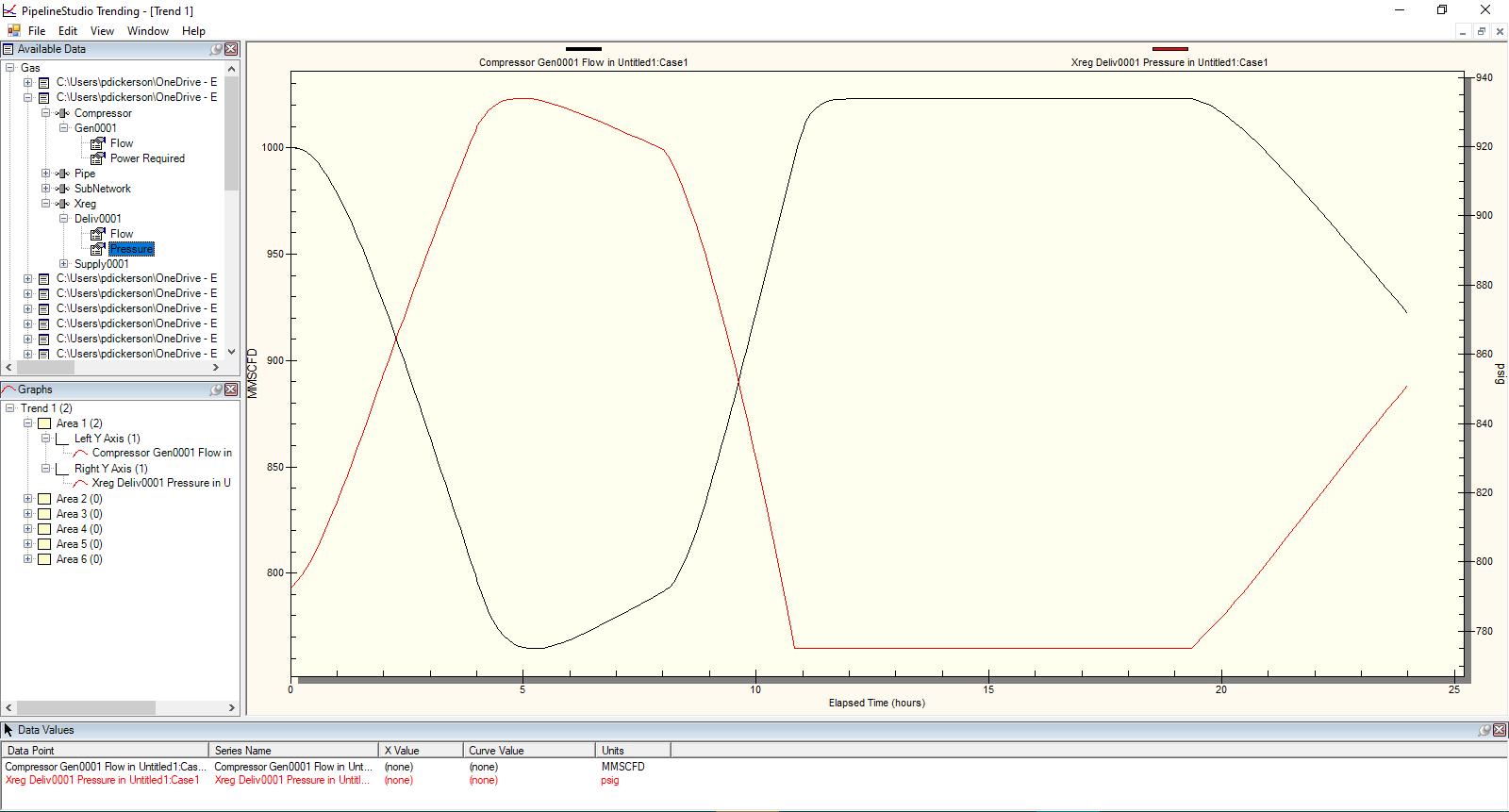
14 minute read
A cleaner energy transition
hazardous liquid pipelines. RP 1130 and RP 1175 support the US regulator’s priorities by putting additional tools and good practices in the hands of operators to effectively monitor and manage potential liquid pipeline incidents.
Pipeline facility management is key to safe operations Pipeline operators are proactively implementing integrity management programmes to ensure their facilities are fully operational, maintained, and safe. In addition to Pipeline Safety Management Systems (Pipeline SMS), facility integrity management programmes – a documented set of policies, processes and procedures to manage facility risk – help operators reduce downtime, prevent leaks and curb emissions.
In January, API published RP 1188, Hazardous Liquid Pipeline Facilities Integrity Management, 1st edition, to provide guidance to operators to build resilient facility integrity programmes.
Much like RP 1173, RP 1188 utilises a PDCA cycle to promote the continuous assessment and improvement of pipeline facility integrity programmes. Recognising that a large portion of reportable leaks and incidents occur at pipeline facilities, rather than along the pipeline right-ofway, this standard covers the integrity management of all pressure containing components directly used in the transport or storage of hazardous liquids within a liquids pipeline facility. It is applicable to pipeline operators and integrity management inspectors.
New pipeline inspection certification fills industry void Additional pipeline construction and infrastructure has led to a growing demand for qualified pipeline facility inspectors. To address this demand, in March 2022 API launched a new certification programme for pipeline facility inspection. The Pipeline Facility Construction Inspection certification, offered through API’s Individual Certification Programmes (ICP), will help to ensure the industry has competent and qualified inspectors for pipeline facility operations, including pump stations, compressor stations, and related facilities.
Following completion of a rigorous qualification process and exam, future facility inspectors should gain an understanding of phases of pipeline facility construction, including the best safety practices, roles, and responsibilities.
Developed with support from the Canadian Energy Pipeline Association (CEPA) and Interstate Natural Gas Association of America (INGAA) foundations, API’s newest inspection programme is based on RP 1184, Pipeline Facility Construction Inspection, 1st edition, published in October 2021.
API has already successfully implemented the first certification programme for pipeline inspectors, API 1169 Pipeline Inspector Programme, a complementary programme to the new Pipeline Facility Construction Inspection certification aimed at helping the industry advance on a path toward a uniform method of identifying and assessing qualifications of facility pipeline inspectors.
Third-party assessment aids improvement of pipeline operations As part of industry’s commitment to help operators share good practices, API, in collaboration with industry partners, developed the Pipeline SMS Assessment Programme to enhance pipeline safety performance and knowledge sharing among operators.
During a Pipeline SMS assessment, a team of independent, third-party safety management system experts work with operators to fully understand their current pipeline safety processes, programmes, and systems to enhance compliance with RP 1173 in order to drive improvements in safety and pipeline safety performance. The assessment includes an evaluation of how operators incorporate external learnings into their Pipeline SMS.
The Pipeline SMS Assessment Programme sets out performance indicators and uses the PDCA cycle to identify safety performance good practices and improvement opportunities for the 10 PSMS elements in RP 1173. The assessment programme helps serve as the ‘Check’ in the PCDA cycle, and allows operators to determine what actions need to be taken, implement them, and regularly review and enact any necessary changes or improvements to their internal programmes. Pipeline SMS assessments help advance industry operations by ensuring that the various components of an operators’ Pipeline SMS are regularly reviewed and continually evolving.
“Sharing and learning among the industry enhances the safety and operating performance of pipelines in line with RP 1173 requirements, helping to drive the industry toward the goal of zero-incidents,” said David Murk, API’s Director of Midstream. “Pipeline SMS assessments help the industry implement RP 1173 and we encourage operators of all sizes, whether in North America or internationally, to participate in the programme with their peers.”
Empowering safe pipeline operations Pipeline safety and integrity are vital to delivering energy to power the global economy. With an anticipated expansion in pipeline infrastructure in the coming years to meet rising demand, the industry must ensure pipelines are safe, sustainable and efficient.
For nearly a century, API has been the global leader in developing consensus standards for the natural gas and oil industry, enhancing operational safety, environmental protection and sustainability across all segments. To reflect changes in technologies, in-field learning, policy and regulatory requirements, API continuously updates industry standards that foster better industry operations, assure quality, keep costs down, reduce waste, and minimise confusion.







The S-500 is manufactured in diameters ranging from 2” to 52” (DN50 to DN1300) and pressure series 150 through 2500. BasedBased onon thethe industry’sindustry’s desiredesire forfor robust and cost-effective solutions, Stark improved upon the standard design to bring operation to a new level. Features to avoid hammering and strengthen operator control were incorporatedincorporated intointo thethe otherwiseotherwise proven design.









Paul Dickerson, Global Products Lead, Pipeline Management Software, Emerson, USA, explores preparing pipelines for the new CO2 and hydrogen rush.
Anovel blend of new technology and critical infrastructure will be required to sequester CO2 and hydrogen as part of the low-carbon energy transition and changing energy landscape. The transition will dictate a redesign of pipelines, along with greater resource optimisation across pipeline networks that requires risk-modeling software and capabilities such as machinelearning algorithms, self-learning adaptive methods, and simulationbased applications for companies to compete and thrive in the future. The oil and gas industry is taking significant strides developing a more defined and central role in reducing greenhouse gas emissions and capitalising on new forms of production amid a diversified and changing energy landscape. Globally, investment in the lowcarbon energy transition hit a recordsetting US$755 billion in 2021, a yearover-year increase of 27%, according to a new report by research firm BloombergNEF. Renewable energy in 2021 captured US$366 billion in new investment, a 6.5% increase from the prior year, for new projects and small-scale systems. The energy sector raised the largest amount of capital – US$68.5 billion – a nod to wind, solar power and hydrogen.
The stakes for oil and gas majors steering the ship toward decarbonisation and a cleaner energy transition are high as they consider the most timely, effective capital expenditures.
Many are opening new forms of dialogue and developing strategic business-to-business partnerships while considering how their pipeline asset management and operations objectives align with currently available technologies, emissions targets, and opportunities for a return.
Future demand Coming demand for carbon capture and storage (CCS), as well as a new hydrogen rush, appears to be well within reach in midstream oil and gas sectors, with aggressive targets being set by energy producers in Europe and around the globe.
Transporting CO2 in pipelines is similar to transporting other pipeline products; it can be transported as a gas or as a dense, liquid or supercritical fluid. Reuters reported in September 2021 there were 15 direct-air capture plants operating worldwide, capturing and sequestering more than 9000 tpy of CO2 from the atmosphere; and direct carbon capture and sequestering from industrial processes are surging.
In the US, approximately 8047 km (5000 miles) of pipelines transport CO2, predominantly to oilfields, where it is used for enhanced oilfield recovery (EOR). A recent report by the Congressional Research Service (CRS), indicating the industry’s stake in the potential to preserve the value of existing pipeline assets while reducing CO2 emissions, was cited as one reason domestic pipeline operators are looking into enriched natural gas and CCS pipeline conversion in the US.

On hydrogen Gaseous hydrogen can be transported through pipelines much the way natural gas is today, and nearly all hydrogen pipeline shipment in the US and overseas occurs in dedicated hydrogen (or syngas) infrastructure. As of December 2020, there were 2588 km (1608 miles) of active hydrogen pipelines in the US, according to the CRS report. By comparison, there are over 482 803 km (300 000 miles) of US natural gas transmission pipelines, excluding distribution mains, located in the 48 contiguous states and Alaska.
More than 90% of these hydrogen pipelines are located along the Gulf Coast in Texas, Louisiana and Alabama, primarily serving refineries and ammonia plants in the region. Comparatively short hydrogen pipelines are located elsewhere in Texas, Louisiana, and in nine other states. California has 16 miles of hydrogen pipeline, Indiana has 14 miles, and the remaining seven states have fewer than 10 miles each.
By mass, hydrogen has the highest energy per mass of any fuel. However, its low ambient temperature density results in a low energy per unit volume. Hydrogen is less energy dense by volume – about four times less energy dense – than natural gas, therefore requiring the development of advanced, large-volume transportation and storage methods that have potential for higher energy density.
Storage of hydrogen as a liquid also requires cryogenic temperatures, as its boiling point at one atmosphere pressure is -253°C (-423°F), coupled with insulated storage facilities.
Some operators have already initiated projects to blend hydrogen in natural gas pipelines. In November 2020, as one example cited in the CRS report, Southern California Gas Company and San Diego Gas & Electric Company filed a joint application with state regulators to initiate a hydrogen blending demonstration project in their respective gas distribution systems in California.
Several other US utilities have proposed or initiated early efforts to test hydrogen blending in natural gas pipeline systems, but they had not announced plans to ship significant hydrogen
volumes in commercial service. In the UK, several agencies, such as SGN, are testing domestic hydrogen in pilot projects. In Italy, one operator had demonstrated 10% hydrogen blending in a segment of its natural gas transmission network serving several large industrial customers.
Hydrogen embrittlement (HE), occurring when metals become fragile as a result of the introduction and diffusion of hydrogen into the material, is another leading cause of concern. Hydrogen is a very reactive with a tendency to want to bond with most elements to form hydrides. It disassociates on metal surfaces and dissolves into the meal lattice, weakening pipelines. Commonly known as hydrogen assisted fatigue and fracture, HE affects all major high-strength structural materials.
Equations of state The analysts assert 20% hydrogen concentrations by volume may be the maximum allowable blend before significant pipeline upgrade costs are required due to potential impacts on pipeline materials. Moving forward, however the blending is qualified or quantified, more dedicated and critical infrastructure will be required to move energy and meet stated emissions reduction targets and needs.
This will likely result in a more comprehensive network of pipelines or storage capacity as part of a novel blend – not only in light of the necessary and inevitable continued use of fossil fuels, but as part of the cleaner energy transition and diversification of resources to fuel a cleaner, new energy industrial complex.
Added to this list of physical complexities, pipeline design also needs to be considered. In general, the mathematics of flow equations have changed little over the years. Minor adaptions to the flow and energy equations are used in appropriate cases, and of course momentum equations have not changed; however the area of question is how the fluid properties are calculated.
The equations of state used in the industry have been derived from and validated against empirical data in the oil and gas space. Enriching natural gas with hydrogen means the equations of state selection for fluid flow and product blending may require a more careful selection. Suggestions for the best equations have been made, however the computational intensiveness may make some less suited to pipeline design applications.
The technology and thought leadership exists to help companies run their pipelines more efficiently and more safely, to deliver the products they need. In fact, many companies worldwide are adopting the tools to design systems that are safe and robust – developing partnerships with outside resources to take a collaborative approach that provides the experience necessary to move forward with confidence in the changing energy world.
Asset management A critical area operators must continue to focus on is pipeline asset management that commands a systems-wide thinking approach, encompassing all facets of business operations, risk management and public image.
The setting of CO2 emissions targets for many established oil and gas majors, including those transitioning to become integrated energy players, has included an assessment of

Figure 1. As new energy products emerge, Emerson’s advanced GIS solutions will help companies easily identify potential issues in high consequence areas (HCAs) for safer operations.

Figure 2. Emerson’s PipelineStudio is an offline engineering tool that provides advanced simulation techniques to improve pipeline design, performance and throughput.
organisational capabilities and operational strategies for efficiency, and to demonstrate where gains are quick and easy to implement.
Many new business relationships are likely to be formed, alongside the development of innovative breakthrough technologies – a combination of the use of data, the acquisition of technology, and access to broad-based experience to improve overall predictability.
Existing software, such as Emerson’s PipelineStudio™ are indicative of offline engineering tools to assist with the natural and liquid gas pipeline planning and design process via advanced simulation techniques. The technology, allowing for steady-state or transient simulations, in high-speed or variable speed interactive modes, offers detailed models of pipes and the common pipeline equipment elements such as valves, compressors, heat exchangers, and other components and other ancillary components.
Emerson is working to lead the way for pipeline operators and consulting firms worldwide. By empowering engineers and planners with reliable and accurate information, Emerson’s advanced software is leading to better decision making that is resulting in improvements in pipeline design, performance, and throughput. In most cases, the optimisation of pipeline system performance, creation of emergency plans and updates to operational strategy can be achieved without interrupting online production and transmission.
Decision points All oil and gas pipelines require attention to design, monitoring for leaks, and protection against overpressure, especially in populated areas. Safety also must always come first when considering hydraulic behaviour of hydrogen enriched gas.
Using powerful simulation-based applications, Emerson’s PipelineManager™ software provides operators with instant insights into daily and routine operations, helping overcome unique challenges often associated with maintaining full compliance with safe operating regulations, and struggling to balance nominations with capacity.
PipelineManager additionally offers advanced, comprehensive leak detection technology ranging from pinhole leaks to ruptures, including those caused by accidents and theft. The software rapidly identifies leaks and efficiently manages operations across the pipeline with real-time access to missioncritical data and the transformation of obscure pipeline data into intuitive charts, graphs and maps.
This ensures improved visibility into current operations, enabling quick and accurate response times as the data are consolidated rapidly, from multiple sources and in real-time, helping inform more accurate decision-making processes across the entire pipeline. It paints a detailed picture of current operations and simplifies the tracking of products, fluid composition, ownership, pigs, scrapers and many other activities down the line.
First-level filtering should always be applied to the pipeline design, management or leak detection data, as a way to identify potential data errors, as well as mitigate the potentially negative impact consequences of inaccurate data measurement or poor SCADA system integration. It is essential to incorporate advanced software into the SCADA system to get a complete picture of the pipeline and how it is operating at any given time.
With an aging infrastructure adding to the complexity, oil and gas majors are talking more openly, and acting decisively, in terms of their roles – and about setting goals and staying ahead of emissions targets. They are working to develop a
clear understanding of the impacts of the energy transition and associated opportunities both in the near and long-term.
Costs for pipeline construction vary, depending upon length and capacity, right-of-way costs, whether the pipeline is onshore or offshore, whether the route crosses mountains, large rivers, or frozen ground, and other factors. The quantity and distance transported will mostly determine shipping costs.
From the design and development of new and necessary energy infrastructures – to the optimisation of existing assets to meet future demands – inquiries often revolve around subjects associated with where to build extra capacity, the best possible

Figure 3. Operators can also more accurately predict compressor pressure by running simulations in PipelineStudio.
Figure 4. PipelineStudio allows for steady-state or transient simulations with detailed models of pipes, including equipment such as valves, compressors, heat exchangers, and other devices.











